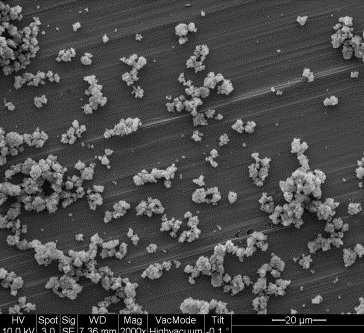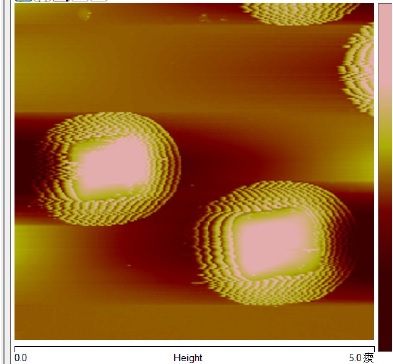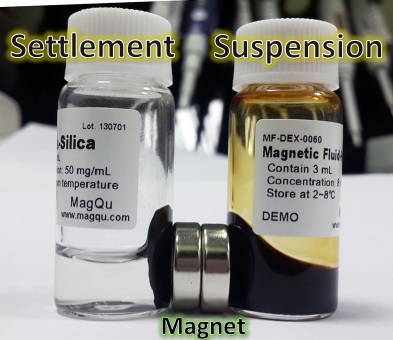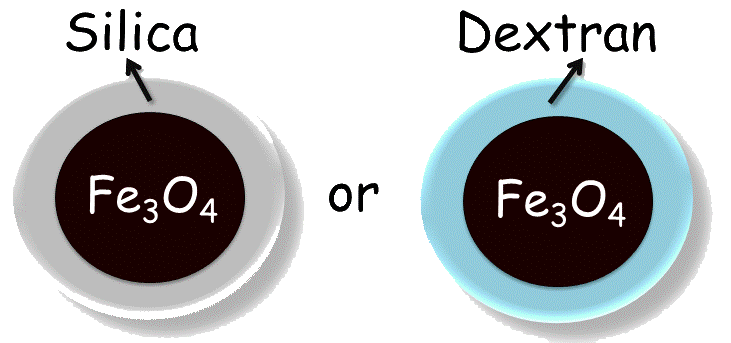Core Tech-Magnetic Beads

We can synthesis a lot of functionalized magnetic beads.
Biological


We can coated difference function group for biological use, such as protein/DNA purification, IMR quantifying protein assay, fluorescence research, MRI, or others.
Magnetic Reagent
Antibody coated Fe3O4 magnetic beads
Antibodies after biotination can associate with magnetic beads. MagQu does supply customer-designed antibody-coated magnetic beads, which also help you to bind your antibodies onto magnetic beads. For versatile biomedical applications such as immunoassay, cell sorting, protein purification, MRI contrast enhancement etc.
Streptavidin-dextran coated Fe3O4 magnetic beads
For tagging or labeling biomolecules, adequate antibodies are necessarily to be bound onto dextran on Fe3O4. Type-II magnetic beads provide sites for antibodies to sit on the dextran. In order to accept various kinds of antibodies and have a high-efficiency association between antibodies and dextran, MagQu utilizes the high affinity between avidin (or its derivates) and biotin, so that streptavidin is selected as these sites. Via coating streptavidin on dextran, Type-II magnetic beads can bind with any kind of biotinyl-antibodies. After mixing biotinyl-antibodies with Type-II magnetic beads, followed by magnetic separation to remove unbound biotinyl-antibodies, antibodies coated Fe3O4 magnetic beads are obtained. Hence, Type-II magnetic beads serve as a platform to prepare tremendous kinds of bio-functionalized magnetic beads.
Fluorescence coated Fe3O4 magnetic beads
The beads with blue, red, or green fluorescent dye can be introduced into cells by microinjection, it can use to microscopy, flow cytometry, and magnetic resonance imaging (MRI). This product is highly hydrophilic, bio-compatible, and easy to use for cellular imaging research.
Qbeads
Our magnetic beads about Qbeads can be applied to DNA/RNA extraction, purification of biomolecule, depletion of biomolecules, immunoprecipitation, pull-down assay, isolation of pathogens, micro-fluidic chip (biochip). The magnetic beads could be temporarily immobilized at tube wall, so the other parts in the supernatant can be removed easily and efficiently under magnetic attraction.
Chemical
Through chemical modification of dextran, the magnetic beads are functionalized withamino group (-NH2), carboxyl groups (-COOH), or Hydroxyl group (-OH).
Physical




Due to magnetic Fe3O4 core, magnetic beads possess permanent magnetism. When these magnetic beads are dispersed in solvents such as PBS solution, the magnetic domain of each individual magnetic bead directs equally to all directions. Thus, no resultant magnetic moment is generated by magnetic beads under zero magnetic field. When an external magnetic field is applied, magnetic domains of magnetic beads tend to align along the external magnetic field, in turns, a non-zero magnetic moment is generated with magnetic beads. As the external magnetic field is removed, due to Brownian motion, the orientated magnetic domains of magnetic beads relax, and direct equally all direction. The magnetic moment of magnetic beads vanishes when the external magnetic field is removed. This is so-called superparamagnetism. A typical magnetic hytereristic curve of superparamagnetic magnetic beads dispersed in solution is shown. Clearly, the magnetic moment M is zero under zero field (H = 0).
Suspension or Settlement

We have the magnetic beads of high suspension or settlement. For high suspension we have magnetic reagent or fluid. For settlement we have Qbeads. About Qbeads-Silica we can control difference sedimentation rate.
Difference Particle Size
We can control the difference particle size. For the magnetic beads coated dextran, you can choose nanoparticle (30, 60 or 90 nm) or microparticle (1 um).
Difference layer

The magnetic bead consists of single-crystal Fe3O4 coated with dextran or silica.
Toxicity
MagQu's magnetic fluids having magnetic-bead concentration lower than 10-5 M are non-toxic to cells or biomolecules.






